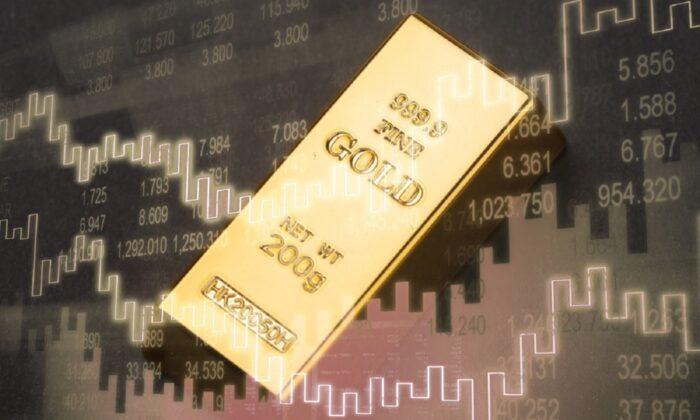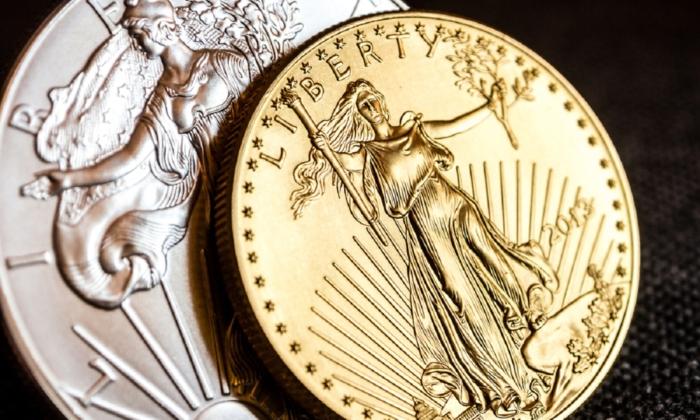It’s no secret that gold prices fluctuate from time to time. However, few people understand why the fluctuation occurs. Some believe inflation skyrockets gold costs, while others think social issues influence prices.
While these factors often affect gold prices, they aren’t the primary reasons. So, why does the price of gold fluctuate? We’re here to explain why and how it affects your investments.
Although there isn’t a sole cause for fluctuating gold prices, there are three primary culprits: investor behavior, supply, and demand
Investor Behavior
Gold is often viewed as a hedge against inflation, meaning the prices usually remain steady or increase over time. Since prices rarely decrease, many people invest in gold to protect their wealth during turbulent economic periods. When the U.S. dollar starts losing value, investors flock to gold, increasing prices.Effects of Dollar Valuation
Between 1998 and 2008, the U.S. dollar’s value fell dramatically, causing many people to invest in gold for security. As more people turned to gold investments, the price nearly tripled, reaching $1,000 an ounce. The gold investment boom continued through 2012 and resulted in another price increase.By the end of 2012, gold prices had reached $2,000 an ounce. The influx of gold investors caused the prices to skyrocket, going from a few hundred dollars an ounce to $2,000 in less than 15 years.
The U.S. dollar’s and the economy’s value tend to correlate with investor behavior. Investors don’t usually buy gold if the dollar’s value remains strong and the economy is in good health, and the lack of investors often decreases gold’s value.
Supply
Believe it or not, nearly every piece of mined gold still exists today. Although mined gold is abundant today, it’s still exceedingly valuable and maintains its price. However, gold mining is becoming more complex and expensive each year.Miners must dig deeper, travel farther, and mine longer to find usable gold. This is partially because the most easily accessible gold is already in circulation. Despite this, the lack of unmined gold combined with the longer mining hours, stricter work conditions, and less usable gold mines made the industry much more expensive. The increased mining costs have a significant effect on gold prices.
Since gold production is more expensive than ever, people must sell gold at a higher price. Although plenty of mined gold already exists, a substantial amount is already owned by someone. Studies indicate that today’s stockpiled gold is 60 times more significant than the quantity of gold mined every year.
Demand
Like most things, the demand for gold plays a crucial role in the precious metal’s price. The higher the demand, the higher the price.The gold investment boom between 1998 and 2012 saw an incredible increase in demand. As more and more investors sank their money in gold IRAs and bullions, the price increased substantially.
If the demand didn’t increase, there is a good chance gold prices would still be below $500 an ounce.
Central Banks and Their Effect on Gold Prices
Although investor behavior, supply, and demand are the most significant contributing factors to why the price of gold fluctuates, they aren’t the only things that affect the cost. The amount of gold in a central bank also contributes to fluctuating gold prices.Central banks have a significant amount of gold tucked away in their reserves. When gold reserves thrive while the economy is doing well, central banks diminish their gold holdings, and gold becomes a dead asset to banks during economic high points.
During these times, gold has little to no return and takes up valuable space in the central banks’ reserves. If investors aren’t interested in investing in gold, central banks don’t have a reason to hold on to it, which reduces the price per ounce.
The Effects of Monetary Policy on Gold Prices
Another essential factor in gold prices is monetary policy. The U.S. Federal Reserve controls monetary policy and influences the growth of the money supply while deciding the inflation rate. Since gold is often considered an inflation hedge, it usually becomes more expensive when inflation increases.High inflation rates don’t always mean lower gold prices. When the U.S. dollar starts losing its value, many people panic and try to find ways to protect their wealth. Many people began investing in gold since it generally maintains its value despite high inflation.
Geopolitical Uncertainty: How World Tensions Influence Gold Prices
One of the biggest reasons people invest in gold is to protect their wealth during economic hardship. However, geopolitical uncertainty and world tensions also drive people to invest in gold as the precious metal has a reputation for being a crisis commodity. Gold investments outperform most other investments during crises.As tensions rise between two rival nations, many citizens fear their economic future and turn to gold as a safeguard. Since gold maintains its value, there’s a good chance that investors will maintain their wealth if their country’s currency collapses. If citizens lose confidence in their government, gold prices tend to increase due to the rising demand.
Countries don’t have to be on the verge of war for people to lose hope in their government. Catastrophic events like terrorist attacks and nationwide epidemics also push people to invest in gold. Since the start of the COVID-19 outbreak, gold prices have risen 28 percent.
Although the United States isn’t on the brink of war, many people are unsure about their future. If tragedy strikes, this uncertainty causes people to invest in gold to protect their fortune.
The price of gold also shot up during Brexit. Since many people weren’t sure of the United Kingdom’s future after withdrawing from the European Union, many citizens put their money into gold and other precious metals. Although there isn’t a way to know for sure, it’s likely Brexit played a pivotal role in the gold price spike.





